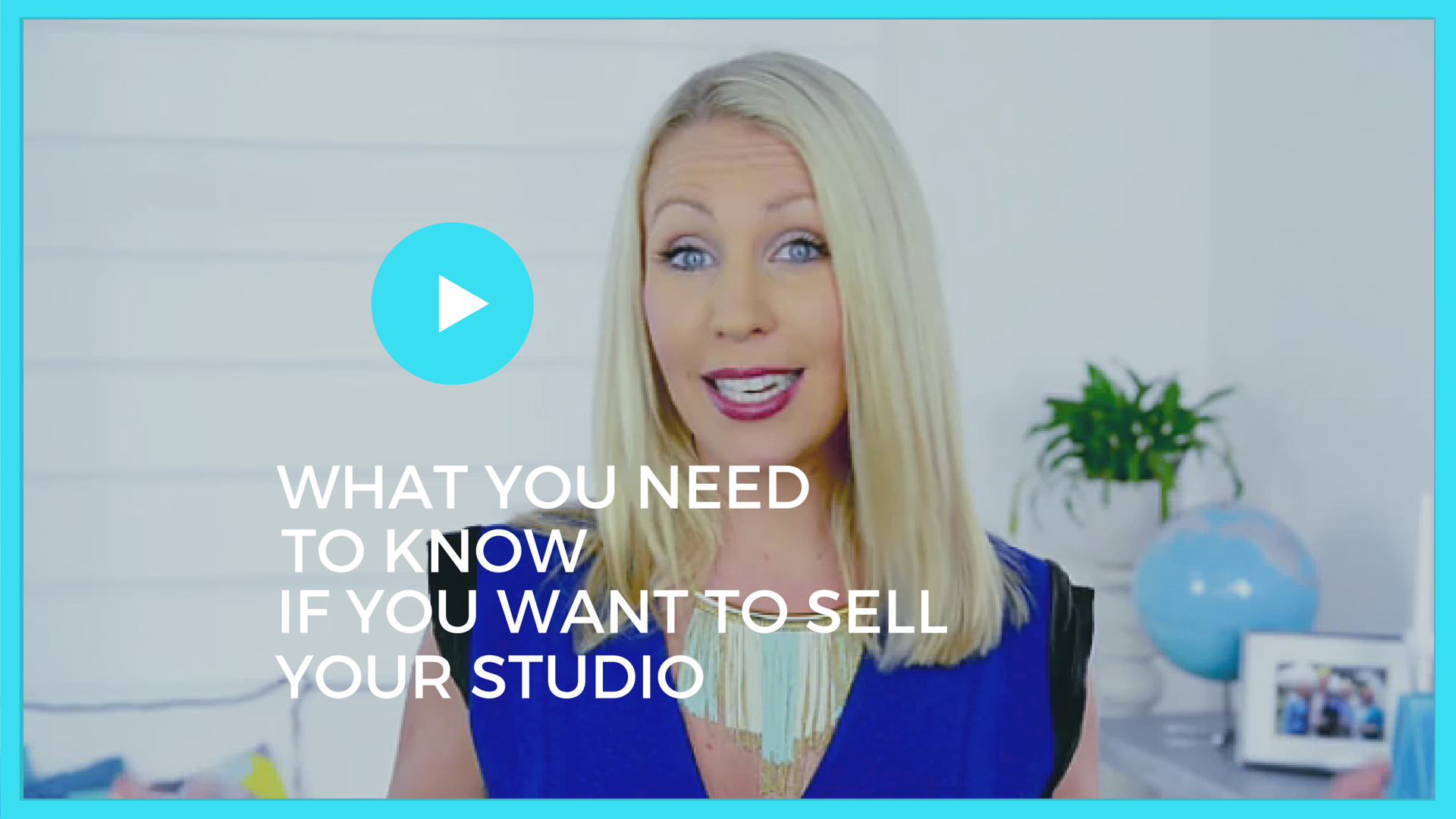Today, I’m going to share with you what you need to know if you want to sell your studio, maybe not now, but sometime in the future.
When we’re talking about selling your studio, what we need to be thinking about is:
How can we show the value of your business?
The first point to consider is that our businesses are based upon relationships. We make our money based on the students that come back time and time again. However, that is tricky to show on a profit and loss statement.
How can we can really turn your studio into a saleable asset?
We need to show how your studio can run without you because probably at the moment, your studio really revolves around you pulling all the levers and keeping the business going.
But if we want it to be saleable, we need to show that the person who’s buying it is going to be able to create the same results that you’re achieving right now without you in the picture.
What this comes down to is how can we systemize your studio so that it doesn’t need you to run?
This is a big process but very valuable and it’s worth thinking about this early on. You don’t want to get to the stage where you have to sell the studio but you’ve got none of the systems and processes in place.
This is something we need to be thinking about probably three to five years in advance before you want to start selling your business.
The first step in systemizing your business to sell is to do an audit.
We want to think about everything that goes on in your studio. We want to write down every single element, essentially creating a studio operations manual.
This operations manual is going to give you the total holistic vision so that someone could step in, and with this manual, run the studio.
This doesn’t need to be a physical folder. I recommend hosting it on Google Sites.
How to systemize your studio in the hopes of one day selling it.
Step one: a brain download.
This is fun to do with another person and it’s hard to do on your own. Write down everything that happens in the studio. Include every detail about what you do in the studio. You can write this in an Excel spreadsheet or big sheets of paper.
Once you start getting everything out, you will start to see that there are areas, chunks of content, which we can form into categories. This is going to be really important when we’re building out this system.
Step two: pull information together in a defined structure
The way I like to do this with my clients is to create a Google site. This free service is essentially like a directory website and you can have everything stored securely. You can allow people to have access at different levels of authority.
Within this Google site, you’re going to create those big content areas. Examples of this may include:
- administration,
- teaching curriculum,
- venue management, etc.
Within those big sections, you will then start to populate all the little tasks that go on. Either type up the step by step procedures or another really fast and easy way to do it is to use video.
You can use your phone to do this or you can use screen recorder capture software to show the steps involved.
For example:
If you want to show how to enter in a new student into your student management software, you can use a program called Camtasia or ScreenFlow to record what’s going on in your screen and you just talk over it.
The person watching the presentation is able to follow step by step how you’re completing this process. They can also can pause and then go do it and come back and have a complete reference guide.
Now we’ve got an asset for the business and the good thing is that it makes it so much easier to sell by getting everything out of your head. It gives the buyer a reference point to come back to—which is going to make it much more appealing.
Once you create the system, not only is it going to help you sell the business but it’s also going to help you really refine your processes as you go. It’s a great exercise in systemising and automating your business to be more efficient.
Step three: training.
So the person who’s buying the studio comes in with you. You sit down. You have a cup of tea and you walk them through how to do everything in the studio, using this resource library that you’ve created.
It’s going to give them so much more confidence about being able to run the studio.
Also, you’re actually going to be able to charge a whole lot more for the business because you’ve created a replicable formula and that is where the worth and the value of your studio lies.
In a nutshell, what we’re selling is the system.
We’re selling that you can come into the studio, you can have the teachers, you’ve got the formula, you’ve got everything at your fingertips and you can create the same thing because when someone is buying a business, what they’re looking for is the return on their investment.
The big question is:
Have you done this? Have you got a systems manual for your studio?
If you think about it, in many ways, this type of process is actually great insurance for your business. If you needed to go and be with a family member for a couple of months, someone can actually step in and ensure that the students can continue learning.
That is huge peace of mind and a huge relief when you’re a solo business owner.
Tell us in the comments below if you have a systems manual for your studio.
By Chantelle Bruinsma Duffield, Studio Strategist at studioexpansion.com















